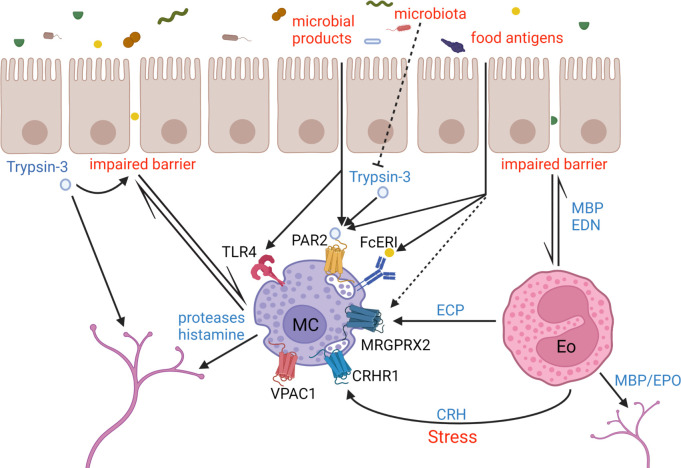Figure 4.
Immune activation in irritable bowel syndrome and functional dyspepsia. Food and microbiota-derived antigens gain access to the subepithelial space through an impaired intestinal barrier function. These antigens and epithelium-derived proteases such as trypsin-3 can activate mast cells and eosinophils through a variety of mechanisms. Mediators from activated mast cells and eosinophils can subsequently activate sensory neurons. Finally, in conditions of psychological stress locally secreted CRH from eosinophils can activate mast cells. CRH, corticotropin-releasing hormone; CRHR1, CRH receptor 1; ECP, eosinophil cationic protein; EDN, eosinophil-derived neurotoxin; Eo, eosinophil; EPO, eosinophil peroxidase; FcERI, high-affinity IgE receptor; MBP, major basic protein; MC, mast cell; MRGPRX2, Mas-related G-protein coupled receptor member X2; NK1/2, neurokinin receptor 1/2; PAR2, Protease-activated receptor 2; SP, Substance P; TLR4, Toll-like receptor 4; VPAC1, vasoactive intestinal peptide receptor type 1. Dashed line indicates a potential link.

